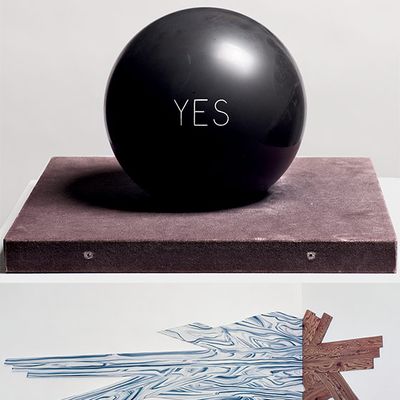
Only an artist as preternaturally acute and copacetic, as oddly visionary and just odd as Richard Artschwager would be able to lay out the whole course of human evolution and have it make some kind of sense while also seeming like a dazzling insight. “We are animals,” he begins. A lot like “plants — just faster.” He explains we started with a “certain amount of movement with no particular purpose,” somehow acquired “memory,” which is a “form of virtual movement,” which he says leads to “a whole universe of the subjunctive.” Whatever all that means, he surmises, “This would be enough to set art into play,” and leads to “the birth of the axiom,” which “marks the start of … reason … and proclaims the social space,” which is, ta-da, “the natural habitat for art.” Who knew? Art-making plants are we.
Artschwager’s art always involves looking closely at surfaces, questions what an object is, wants to make you forget the name of the thing you’re looking at so that it might mushroom in your mind into something that triggers unexpected infinities. He’s a maker of rough, swirly, charcoal drawings of bumpy boards, oversized and oddly shaped pieces of sculpture of Formica and plywood that look like furniture that looks like it might evolve into some nonliving lifeform. They stump, interrupt cognition, stand in the way of reason to trigger off deeper thinking, more looking, and things unmeasurable. I wrote about him last year, won over after a long bafflement. This plant will be missed.




